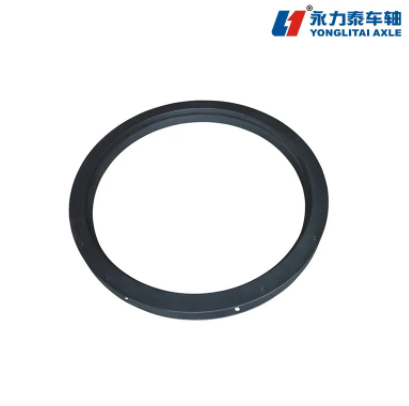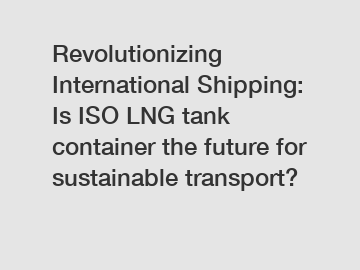How many axles are on a trailer?
Trailers, those versatile companions of modern transportation, come in a myriad of shapes and sizes, each tailored to specific hauling needs. One of the critical considerations when designing or selecting a trailer is the number of axles it should have. Axles play a crucial role in determining a trailer's weight capacity, stability, and maneuverability. In this article, we'll dive deep into the world of trailer axles to understand why the number of axles matters and how to make the right choice for your towing needs.
Axles: The Backbone of Trailers
An axle is a central shaft that rotates the trailer's wheels and supports the weight of the trailer and its cargo. Each axle has one or two wheels attached at either end. The number of axles on a trailer significantly influences its performance, load capacity, and how it handles on the road. Trailers can be categorized into single, tandem, tri-axle, and even more complex configurations.
1. Single Axle Trailers: Simplicity and Light Loads
Single axle trailers have only one axle with two wheels. They are typically designed for lighter loads and are often used for personal or recreational purposes. Think of a small utility trailer used to transport yard waste, a motorcycle trailer, or a small camping trailer. These trailers are easy to maneuver and suitable for hauling relatively light cargo.
While single axle trailers offer simplicity and maneuverability, they do come with limitations in terms of weight capacity. Due to the single axle design, they may not be suitable for heavier loads, and they can be more prone to swaying or instability, especially at higher speeds.
2. Tandem Axle Trailers: Balancing Capacity and Stability
Tandem axle trailers have two axles with four wheels. These trailers strike a balance between load capacity and stability. The weight of the trailer and its cargo is distributed across two axles, allowing for increased load capacity compared to single axle trailers. Tandem axle trailers are commonly used for hauling heavier loads, such as construction materials, landscaping equipment, or multiple vehicles.
The presence of a second axle enhances stability, especially during highway speeds and sudden maneuvers. Tandem axle trailers are less prone to swaying and offer a smoother towing experience. The additional tires also provide redundancy, so if one tire fails, the trailer can still be safely operated.
3. Tri-Axle and Beyond: Heavy-duty Hauling
Tri-axle trailers feature three axles and six wheels, and there are even trailers with four or more axles for exceptionally heavy loads. These trailers are the heavyweights of the towing world and are used for transporting massive loads, such as heavy machinery, construction equipment, and large boats.
The advantage of tri-axle and multi-axle trailers is their ability to distribute weight even more effectively, reducing the stress on each individual axle. This results in improved load stability and enhanced control while towing. However, these trailers also come with a higher level of complexity, and maneuvering them can be challenging, especially in tight spaces.
What are benefits of air suspension?
What are the different types of pallet racking systems?
The Power of LNG Semi-Trailers: Unlocking a Cleaner Future for Transportation
Side Wall Trailer: A Comprehensive Guide to its Features and Benefits
Why do people like campers?
Why do people like Travel campers?
Safety Procedures for LPG Forklifts
Choosing the Right Axle Configuration
Selecting the appropriate axle configuration for your trailer depends on various factors, including the type of cargo you'll be hauling, the towing vehicle's capacity, and your intended use. Here are some key considerations to keep in mind:
1. Load Capacity:
The primary consideration is the weight of the cargo you'll be transporting. Single axle trailers are suitable for lighter loads, while tandem and multi-axle trailers can handle heavier weights more effectively. Always ensure that your chosen axle configuration matches the weight you intend to haul.
2. Stability and Control:
If you're planning to tow at higher speeds or on highways, stability becomes a critical factor. Tandem and multi-axle trailers offer better stability and control, reducing the risk of swaying during towing.
3. Maneuverability:
Consider where you'll be towing the trailer. Single axle trailers are more maneuverable and are suitable for tight spaces, while multi-axle trailers require more space for turning and parking.
4. Budget:
The number of axles can impact the cost of the trailer. While single axle trailers are generally more affordable, multi-axle trailers with advanced features can be more expensive.
5. Maintenance and Redundancy:
Having multiple axles provides a level of redundancy. If one axle or tire fails, the others can still support the trailer. This can be especially important when hauling valuable or delicate cargo.
6. Legal Regulations:
Different regions have regulations regarding axle configurations and weight limits. Make sure to comply with local laws and regulations when choosing a trailer.
In Conclusion
The number of axles on a trailer is a critical factor that directly influences its load capacity, stability, maneuverability, and overall performance. Single axle trailers are suitable for lighter loads and offer simplicity in maneuvering, while tandem and multi-axle trailers provide increased load capacity and stability for heavier hauling. The right choice depends on your specific towing needs, the type of cargo you'll be transporting, and the conditions in which you'll be towing. Whether you're towing for personal, commercial, or recreational purposes, understanding the role of axles in trailer design will help you make an informed decision and ensure a safe and successful towing experience.
Additional resources:What are the different types of tanks in LNG ship?
The Future of Shipping: Maximizing Efficiency with Marine LNG Tanks
What is a car transport semi trailer
What are curtain side trailers used for?
What are the top advantages of using LNG transportation equipment?
How should LPG be stored?
What are the layers of the LNG tank?
Related Articles









Comments